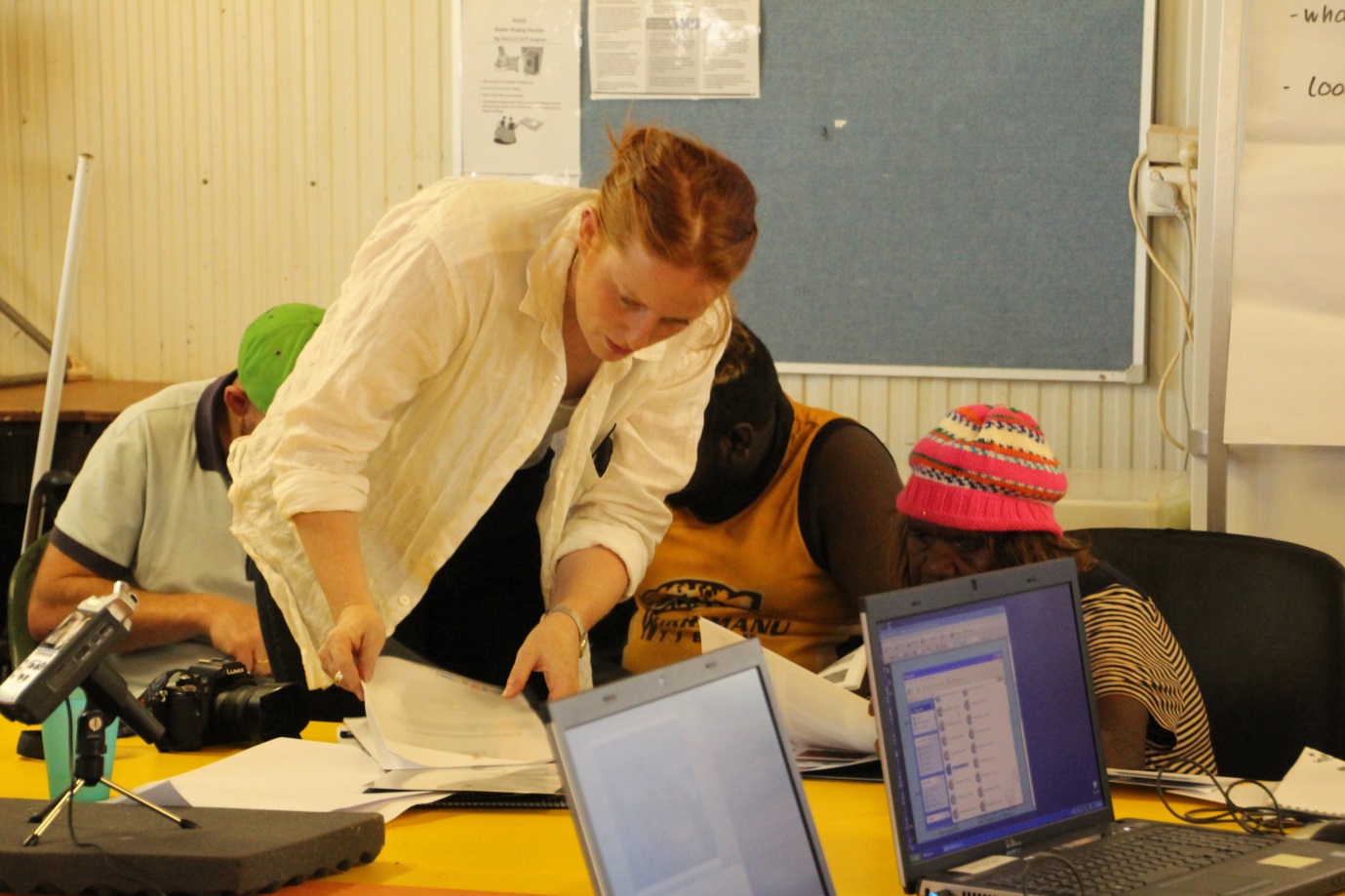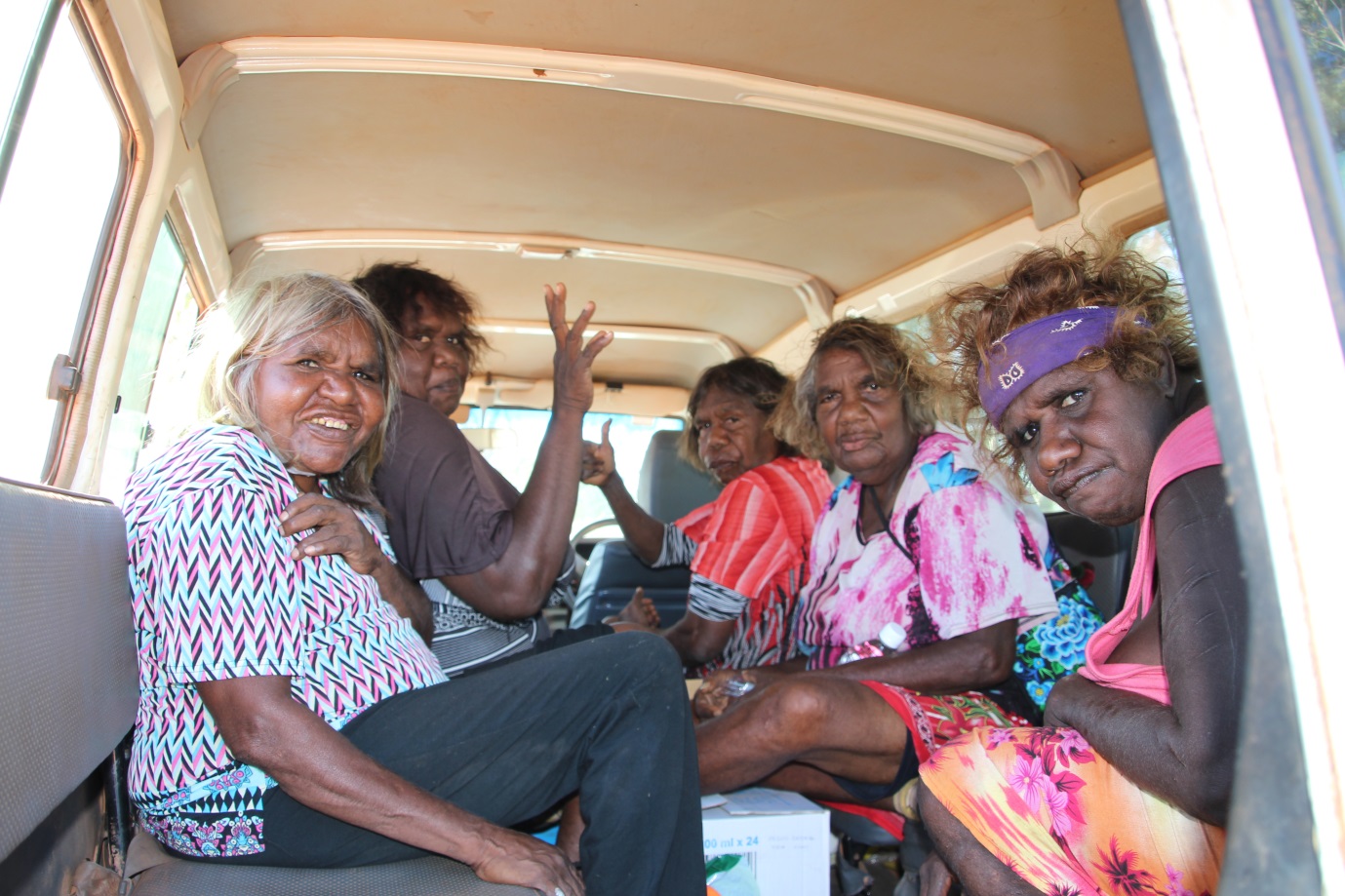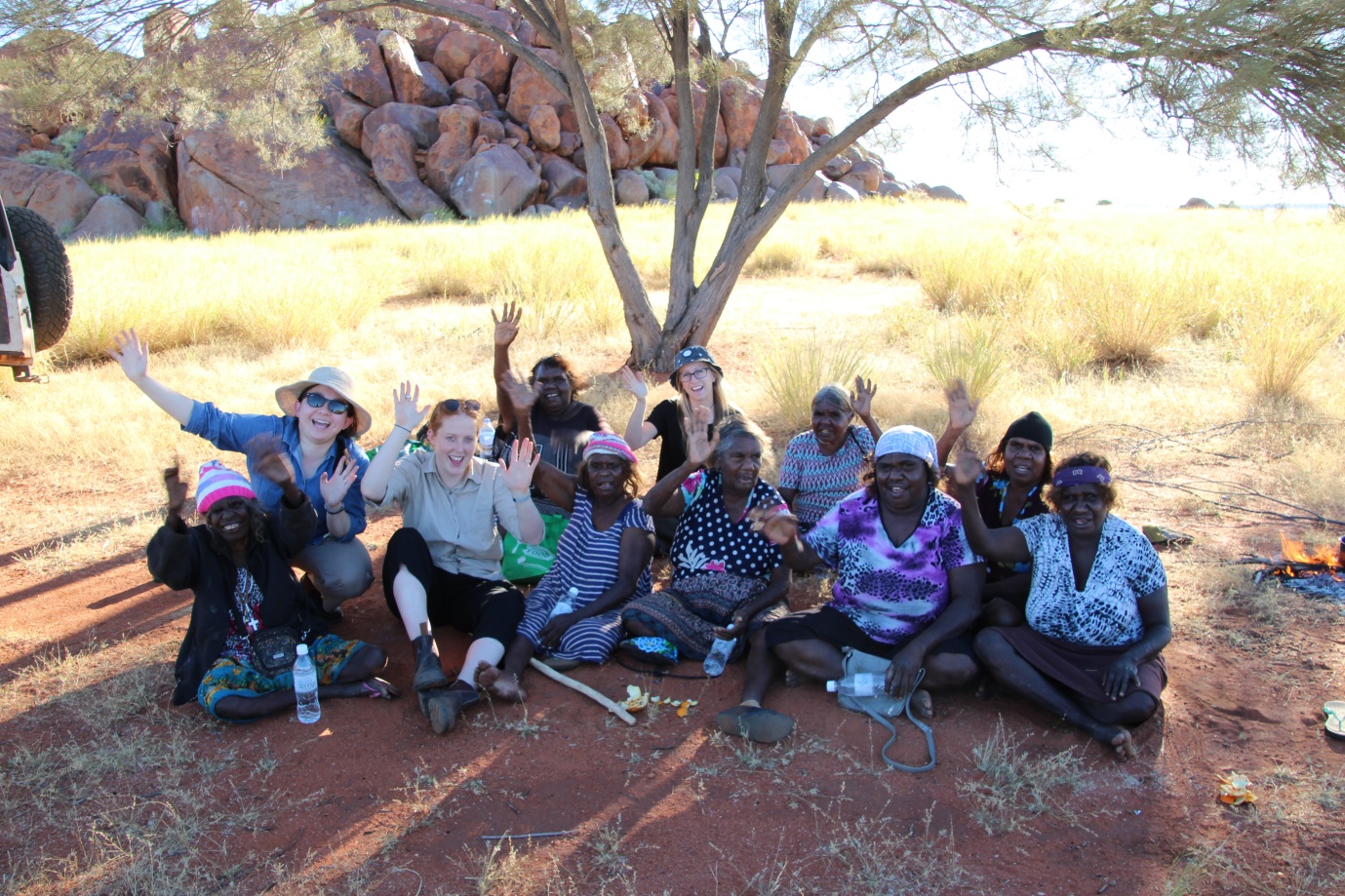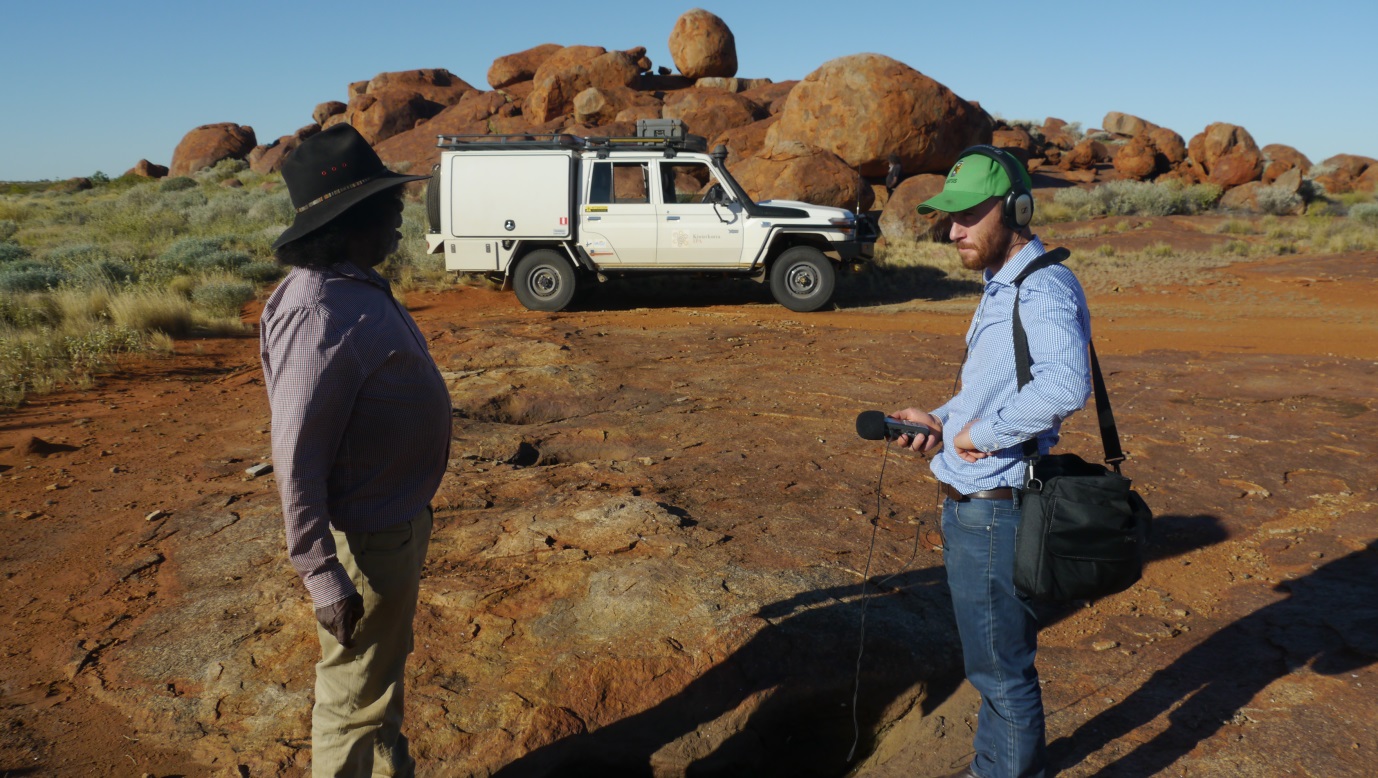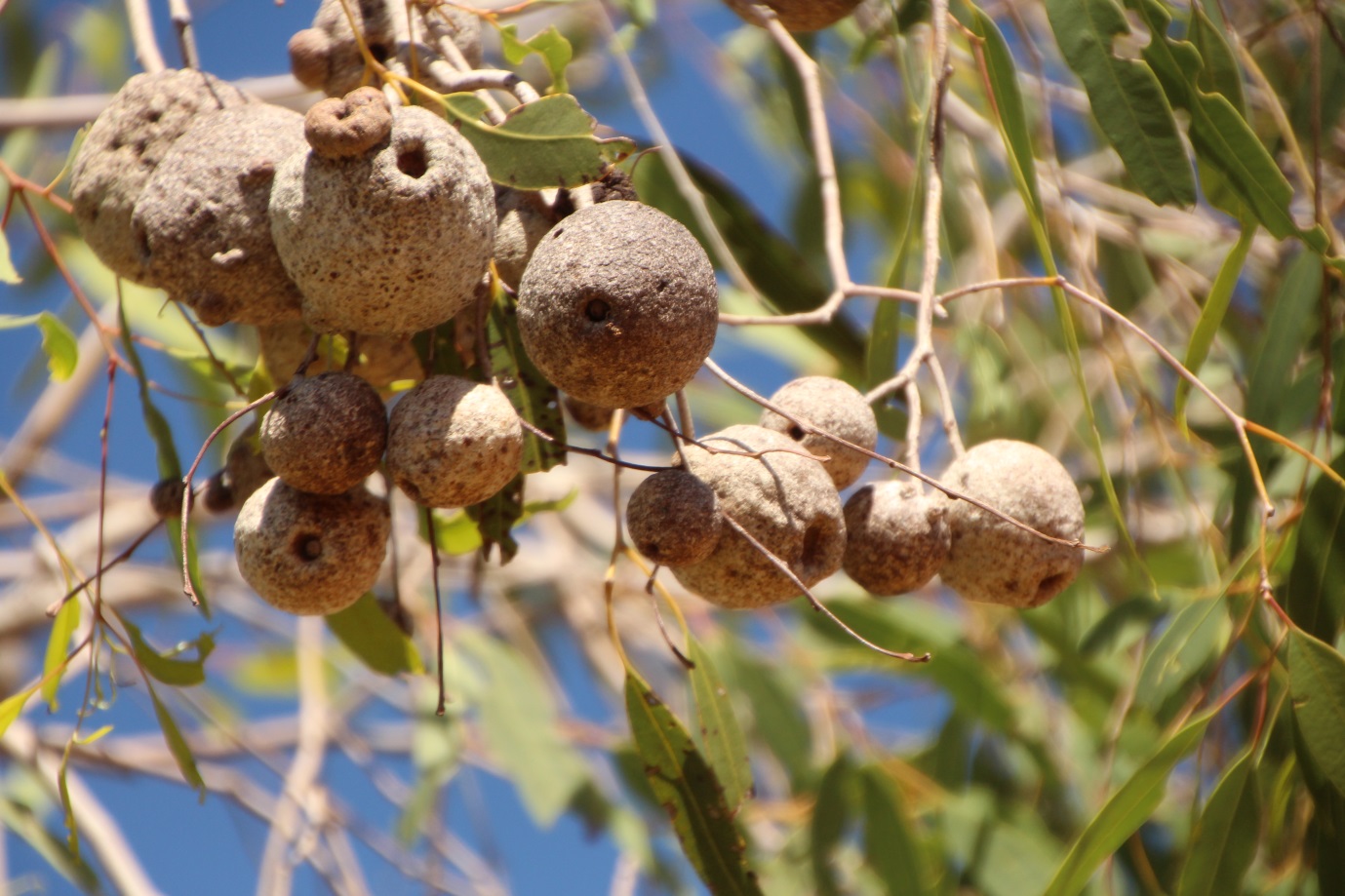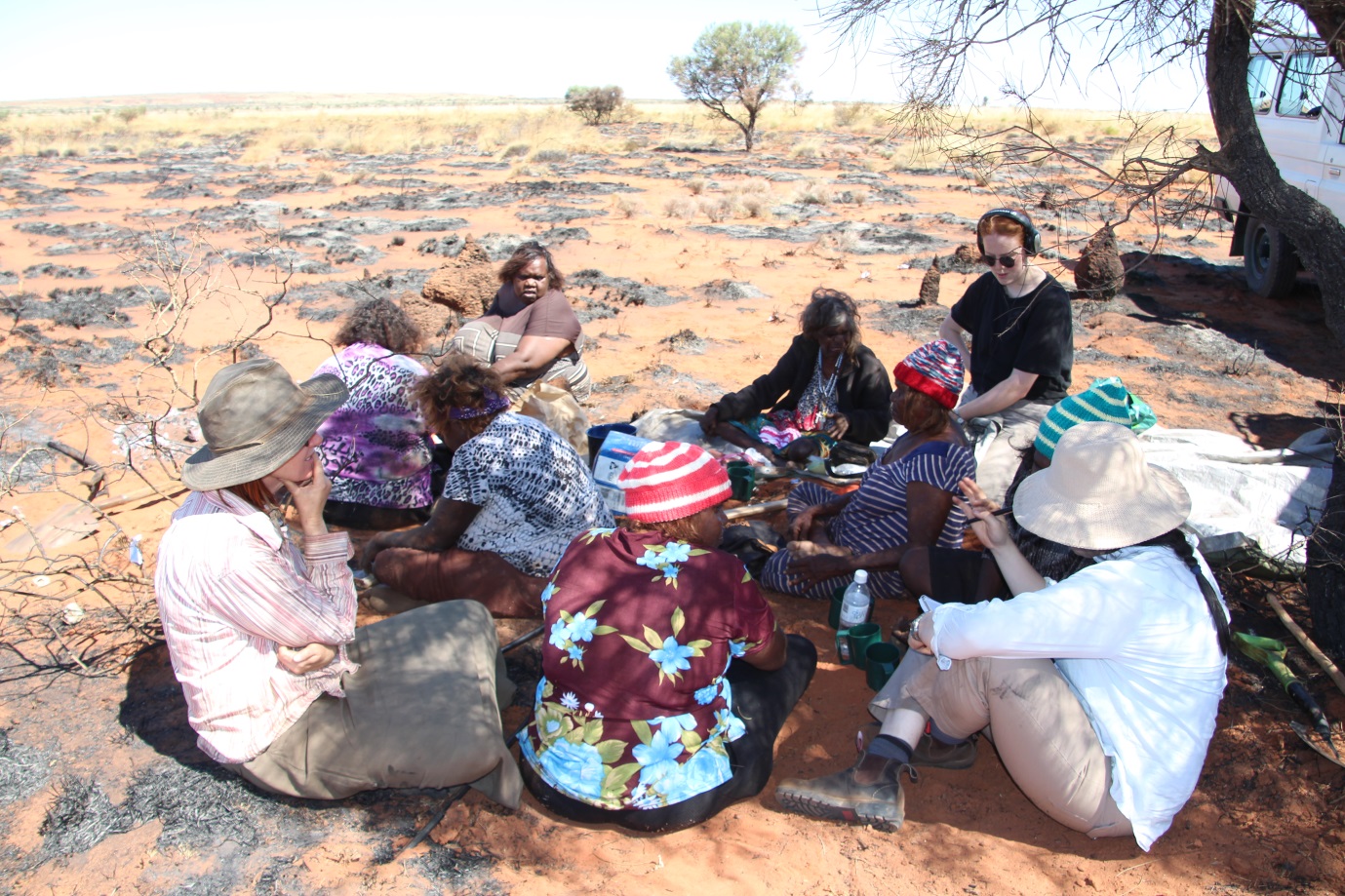In the first week of April, Tran Tran, Nell Reidy, Doug Marmion, Thomas Allen and Amy Chesher from AIATSIS travelled to the Kiwirrkurra community to run the first workshop of a pilot project – ‘Keeping the Desert Stories Alive’ – to find ways to return Kiwirrkurra material from the archive to the community, record new stories and develop strong rules about keeping community stories safe. The project aims to counter a long history of information being collected about Indigenous people rather than for them, while enabling traditional owners to assert control over their information and cultural material into the future.
Getting to Kiwirrkurra
The Kiwirrkurra community is located 730 kilometres west from Alice Springs on the boundary of the Gibson and Great Sandy Deserts. The community was established in the early 1980s when Pintupi people gradually moved west from the mission at Papunya to return to their traditional land characterised by the tali (sand hill) country of the Gibson desert south west of Lake Mackay.
Papunya was established as an Aboriginal settlement in 1959 and accommodated many Aboriginal people ‘brought in’ from the desert. Many of these people were Pintupi from west of Papunya. In the early 1970s, a group of Pintupi people left Papunya and began to move back to their country. They first stopped at Yayayi, where they camped for some time. Then they moved further west and established the Kintore community and a smaller group continued further west and settled at Kiwirrkurra. Kiwirrkurra connection to country has since been recognised in a native title determination covering 42 857 square kilometres. The entire Kiwirrkurra determination area is managed as an Indigenous Protected Area based on the tjukurrpa (law) underpinning the ecological and cultural practices for caring for country.
With Kate Crossing from CDNTS, Tran and Nell drove to the Kiwirrkurra community on 3 April. It took about nine hours, but was a spectacular drive through the West McDonnell Ranges, past Mt Liebig, through Papunya and across the sandy plains scattered with Desert Oaks. Doug, Tom and Amy from AIATSIS experienced this landscape from the mail plane as they flew in on Tuesday morning.
Day 1
On the first day we held an introductory meeting at the Women’s Centre, and talked about AIATSIS and what we hoped to do over the next three days. After the meeting, people began looking at old photos from the ‘After 200 Years’ collection as well as those taken by Fred Myers and Jeremy Long in the 1960s and 1980s. Some of the older people know Jeremy Long and Fred Myers well and others remember stories of when they worked with Pintupi people. Fred Myers began working with Pintupi people when they were camped at Yayayi from the 1970s and he took many images of community life, some which featured workshop participants as babies or younger women. Members of the community enjoyed seeing images of themselves as young children but were also saddened by seeing those who have passed away.
In the afternoon, we split into men’s and women’s groups for the first recording session. The women drove to Marapinti to record restricted women’s stories and songs. Marapinti is a rock hole west of Kiwirrkurra and is a part of the Seven Sister’s journey, which begins near Roebourne. Marapinti is where the sisters stopped and pierced their noses.
At the same time three senior men from Kiwirrkurra travelled to Ngami to discuss this site’s significance and also make recordings of a public song-cycle. The men discussed who could listen to these songs and what protocols should be followed to obtain copies of the recordings. A process to return important men’s restricted material held at AIATSIS was also decided on.
Day 2
On Wednesday we talked about developing culturally appropriate processes for the safe keeping and future access of the material we had recorded. We discussed AIATSIS as an archive and how material is kept for people and their families to use into the future. The information provided by the men and women recorded was strongly linked to places and sites and the rules for managing knowledge mirrored who had access to stories for a particular site. Before we set off for another afternoon of recording, we enjoyed a great barbeque lunch, thanks to Tom’s hard work!
After lunch, the women went to Ngami. Here, we recorded new stories and talked about access rules for the material recorded by the women at Marapinti the previous day, and Ngami and ways in which people had access to ninti (knowledge).
The women also discussed the best pathways for seeking permission to look at and to use the material once it is stored at AIATSIS. Many of the women had lived in the desert without contact with non-Aboriginal people until the 1980s and hold extensive knowledge of Kiwirrkurra lands. Some of the women came into town with Jeremy Long, who led ‘patrols’ into the Western Desert in the late 1950s and 1960s to make contact with Aboriginal groups still living exclusively off their traditional lands. Many of these people still recall seeing vehicles for the first time – an event that happened while Doug was a school teacher in Kintore.
The men travelled east of Kiwirrkurra to Walykalykarra to record stories about the flora, fauna, families and history associated with these places. Mr Brown shared his knowledge of the area as well the story of how Kiwirrkurra was established as a Pintupi community.
Day 3
On the last day, the women drove to Karruwarra and talked about the Kuniya Dreaming site that extends west across to the desert into Martu country. On the drive we made a quick stop for mangarri including bush coconuts before finding rumiya (sand goannas) for lunch. The women also had a conversation about cultural processes for the material recorded at Karruwarra.
That evening, some of the women viewed the videos we had recorded during the trip. They told us the workshop was palya lingku (very good) and there was some good wangka (positive discussion) about keeping stories safe. We talked about what the next could look like and drafted some ideas for new things to record and the need for continuing conversation around the management of their knowledge.

Amy, Nell and Tran trying to look intrepid before the flight.
Doug and Tom drove back to Alice Springs while we got the bumpy plane ride back the following day.
Amy, Nell and Tran trying to look intrepid before the flight.
Doug and Tom drove back to Alice Springs while we got the bumpy plane ride back the following day.
Acknowledgements
This project is a partnership between the Australian Institute of Aboriginal and Torres Strait Islander Studies (AIATSIS) and Central Desert Native Title Services (CDNTS), Tjamu Tjamu and the Kiwirrkurra community. We would like to thank all the Kiwirrkurra people who worked with us during the week and Central Desert for their financial and in-kind support for the project.
‘Keeping the Desert Stories Alive’ is part of an AIATSIS research project, ‘Preserve, Strengthen, Renew in Communities’, which aims to involve communities in the development of culturally informed processes and practices for returning materials, and creating and archiving new materials.


